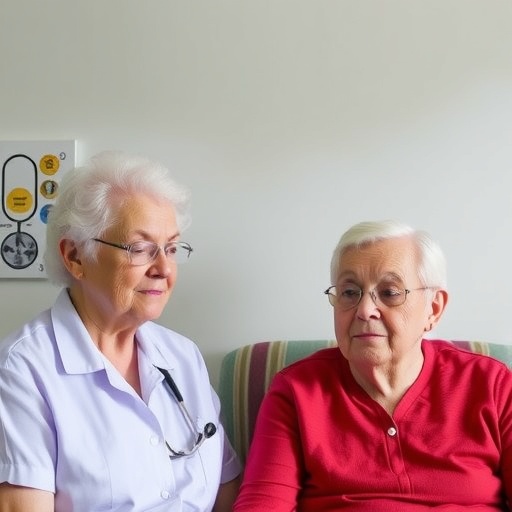Engineered tissues and organs have been grown with various degrees of success in labs for many years. Many of them have used a scaffolding approach where cells are seeded onto biodegradable supportive structures that provide the underlying architecture of the organ or tissue desired.
But scaffolds can be problematic — ultimately, they should degrade and disappear, but timing that decomposition to coincide with the maturation of the organ is tricky, and sometimes degradation byproducts can be toxic. Scaffolds also can interfere with the development of cell-to-cell connections, which are important for the formation of functional tissues.
Now, a research team led by Eben Alsberg, the Richard and Loan Hill Professor of Bioengineering and Orthopaedics at the University of Illinois at Chicago, has developed a process that enables 3D printing of biological tissues without scaffolds using “ink” made up of only stem cells. They report their results in the journal Materials Horizons.
“Our cell only printing platform allows for the 3D printing of cells without a classical scaffold support using a temporary hydrogel bead bath in which printing takes place,” Alsberg said.
The micron-scale hydrogel beads allow the nozzle of the 3D printer to move through it and deposit cells with minimal resistance to that nozzle movement or the ejection of the cells. The gel beads support the cells as they are printed and keeps them in place and preserves their shape.
Once the cells are printed into the hydrogel bead matrix, it is exposed to UV light, which cross-links the beads together, in effect freezing them in place. This lets the printed cells connect with each other, mature and grow within a stable structure. The media that bathes the cells flows easily through the cross-linked gel beads and can be changed out as needed to provide fresh nutrients and dispose of waste products made by the cells. The hydrogel beads can be removed through gentle agitation, or controlling their degradation, leaving the intact tissue behind.
“The hydrogel bead bath has unique properties which allow for both printing of the cell-only bioink in complex architectures, and subsequent temporary stabilization of these cell-only structures to allow for cell-cell junctions to form,” Alsberg said. “Using chemistry we can then regulate when the beads go away.”
The cells Alsberg’s team used are stem cells — those that can differentiate into a wide variety of other cell types. They used the stem cells to 3D print a cartilage ear and a rodent-sized “femur” in the hydrogel bead bath. The cells they printed were able to form stable, cell-cell connections through specialized proteins.
“For the first time, cell-only constructs can be printed in intricate forms that are made up of different cell types without a hydrogel carrier or traditional scaffold that can then be stabilized for a period of a day to weeks. We’ve demonstrated that cell aggregates can be organized and assembled using this strategy to form larger functional tissues, which may be valuable for tissue engineering or regenerative medicine, drug screening and as models to study developmental biology,” Alsberg said.
###
Oju Jeon, Yu Bin Lee, Sang Jin Lee, and Derrick Wells of the bioengineering department at the University of Illinois at Chicago and Hyoen Jeong of Case Western Reserve University, are co-authors on the paper.
This work was supported by National Institutes of Health grants R01 AR063194, R01 AR066193 and R01 EB023907.
Media Contact
Sharon Parmet
[email protected]
Related Journal Article
https:/
http://dx.




